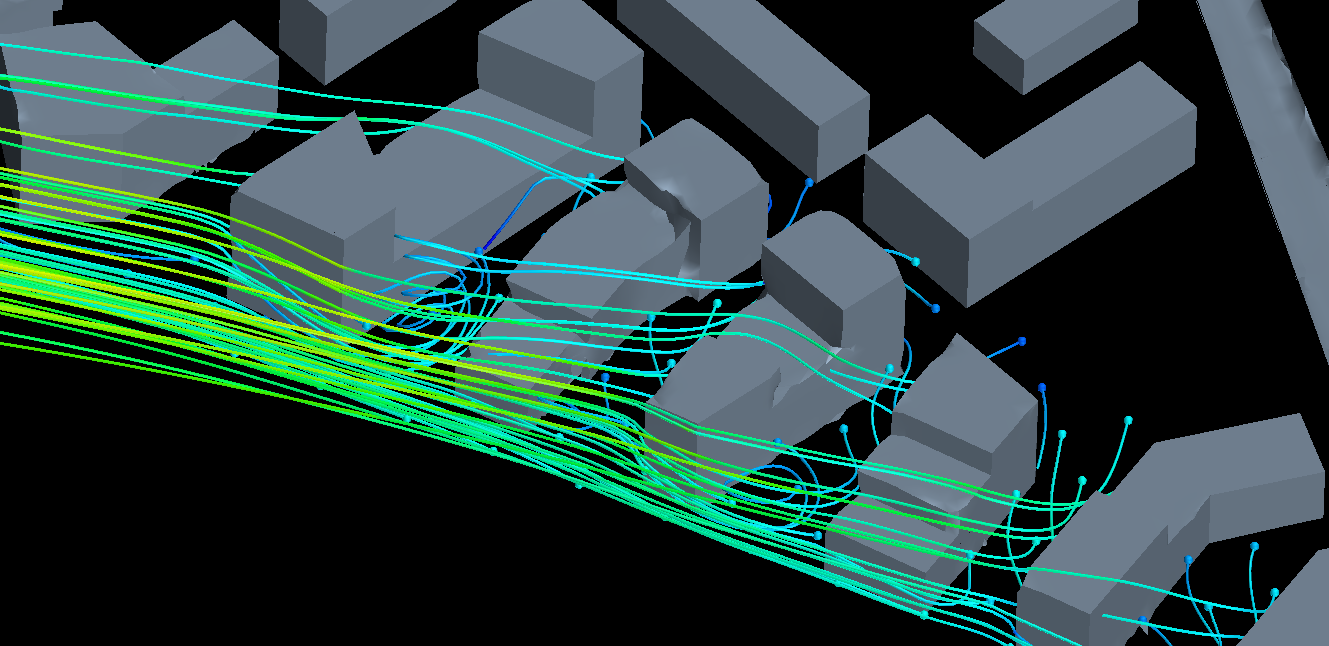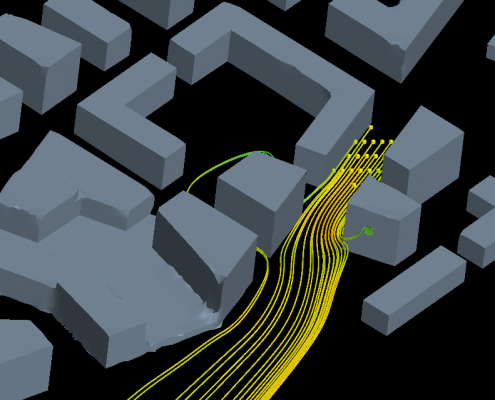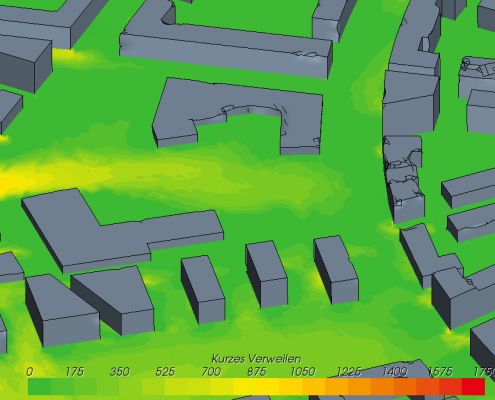Microclimatic factors influence the quality public open spaces. In aspern – Vienna’s Urban Lakeside, the results of a wind comfort study are incorporated into planning since the master plan phase. Thus it is ensured that no wind aisles are created and open spaces invite residents to linger.
One of the ultimate goals of the Smart City Wien Framework Strategy is to achieve the best quality of life for all Viennese citizens. A contribution to high quality of life in the city is a high quality of its open and green spaces. The inhabitants of the city like to spend their time in those spaces when they find a pleasant microlima. This includes comfortable wind conditions as well as tolerable temperatures during a summer heat wave.
Comfort in public spaces
Pleasant summer temperatures are achieved by putting together a mix of measures appropriate to the location. These include, for example, plants, unsealing, shading and water surfaces. The aim is to design public open spaces in the city in a way that they are lively during a heatwave and accepted by the population.
In addition to thermal comfort, wind comfort is crucial for a pleasant microclimate. The shape, size and location of a building determines the wind situation around the it. Depending on the design, it can strengthen or weaken the wind in open spaces. If the playgrounds, passageways, entrances and public gardens are often stormy, then people do not feel comfortable there – the wind comfort is low. This is prevented by appropriate analysis and planning prior to construction.
Consultation in aspern
By taking into account these microclimatic factors in aspern – Vienna’s Urban Lakeside and the development of specific measures for a pleasant urban climate, the quality of public spaces is significantly increased. The aim is to create a district that promotes urban life and to ensure user claims to public spaces in the long run.
Since the master plan phase of aspern – Vienna’s Urban Lakeside the team of Wien 3420 AG, the development agency for this urban development area, has been incorporating micro-climatological consultation into the plans for the new district. At the beginning it was about the analysis of the planned road network and the construction site configuration. Roads that would have been susceptible to channeling the wind because of their orientation or places that had low wind comfort due to the adjacent building mass dispersion could be identified in advance. These places received special attention in the later detailed planning. A temporarily installed wind measuring station provided the necessary climatological information for the consultation.
For detailed planning of the construction sites, field-specific improvement measures are developed in cooperation with the respective building contractors. The aim is the best quality of open spaces possible. For example, in the case of the wooden high-rise HoHo Vienna, Weatherpark advised the architectural office Rüdiger Lainer + Partner ZT GmbH on the planning of comfortable open spaces around the building. This advice was based on the wind comfort analysis of the master plan for the entire new district. The developed measures include, for example, canopies that provide sufficient protection against wind and the correct selection and placement of trees, which do not only protect the spaces from wind, but also serve a purpose to prevent overheating during summer.
Contact
Weatherpark GmbH
E-Mail: info@weatherpark.com
Website: www.weatherpark.com/aspern-lakeside
This post is also available in: German






